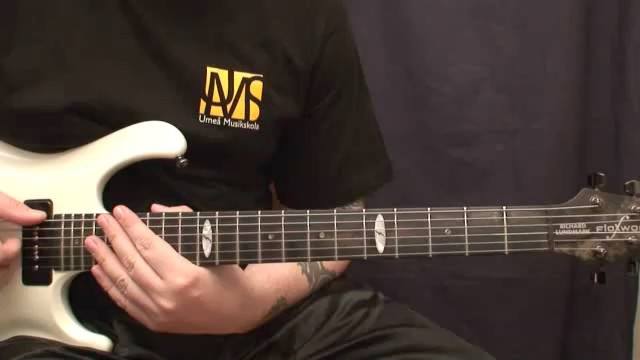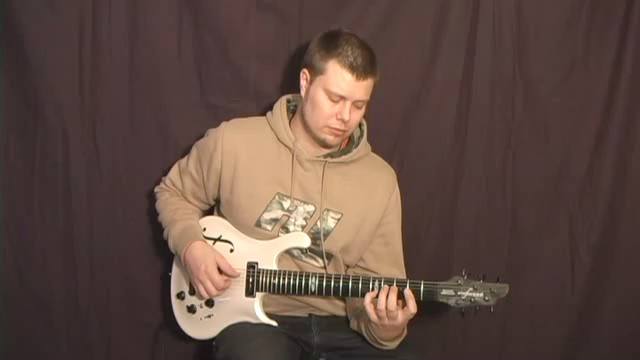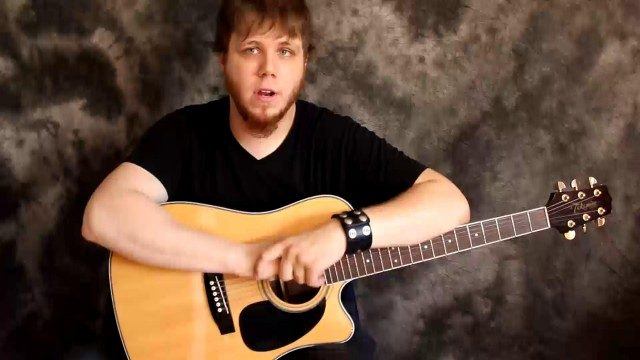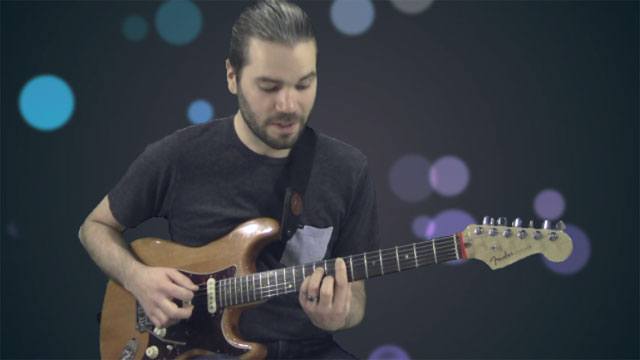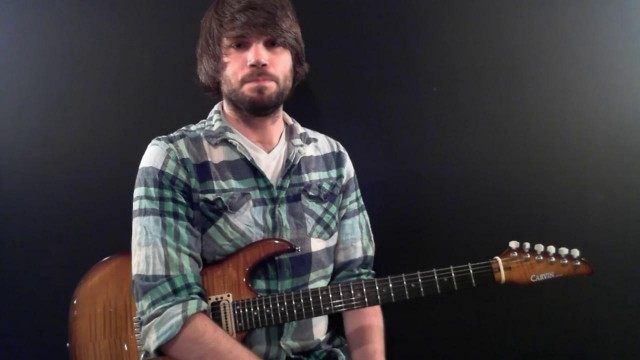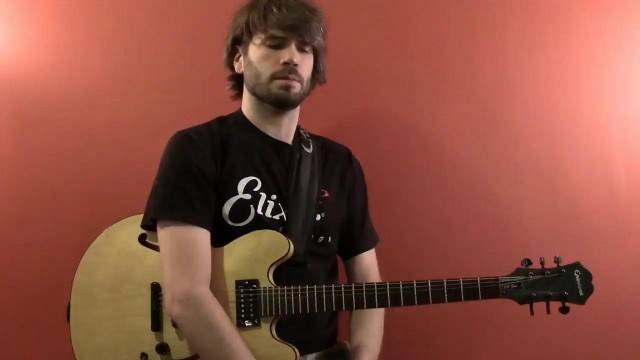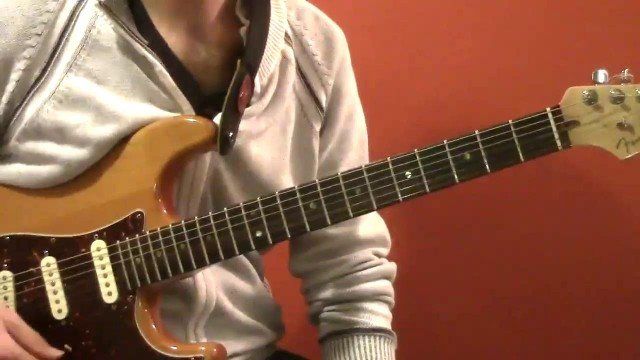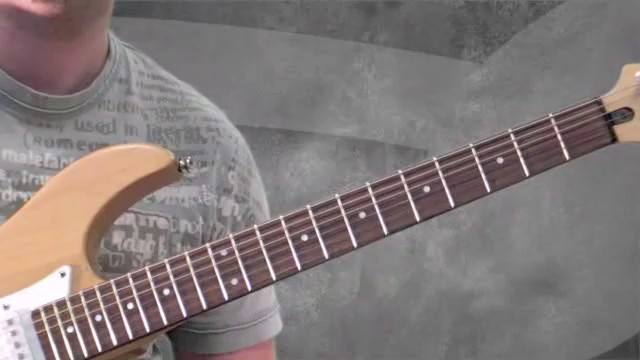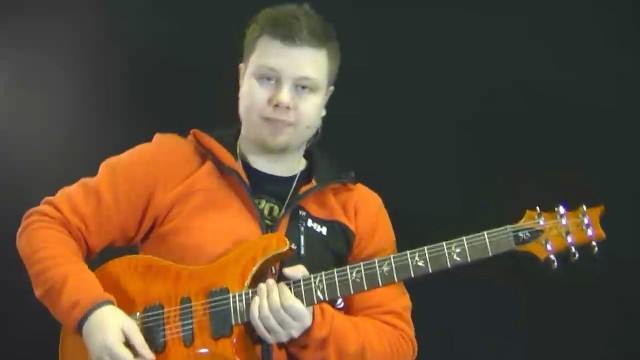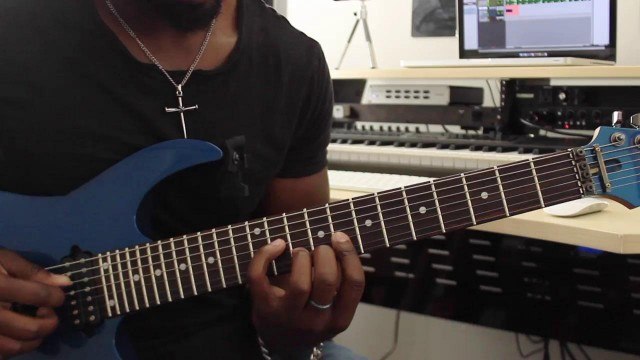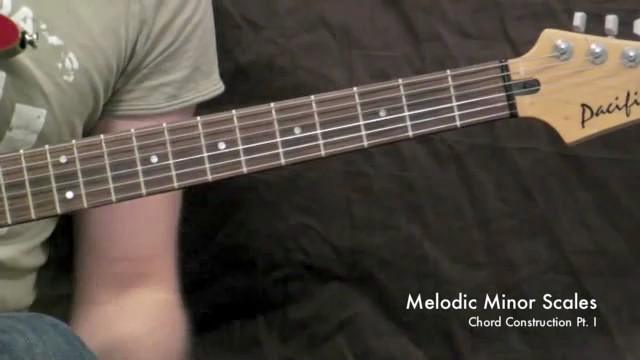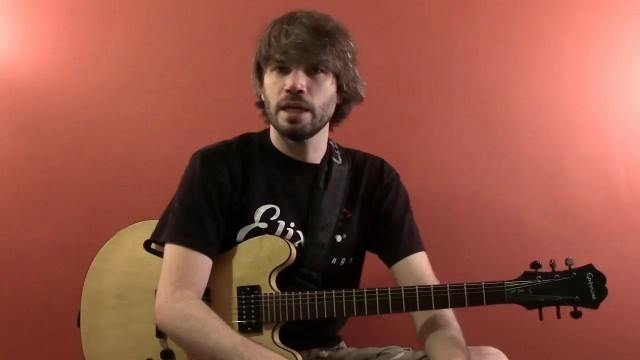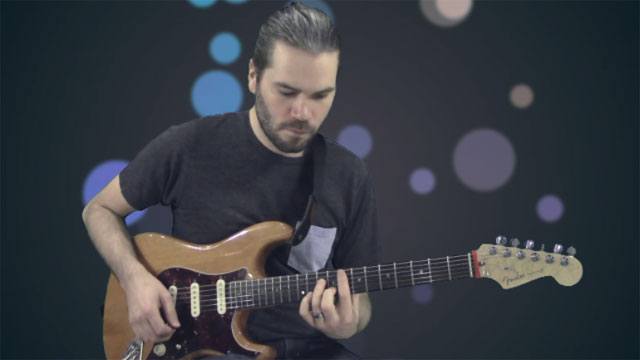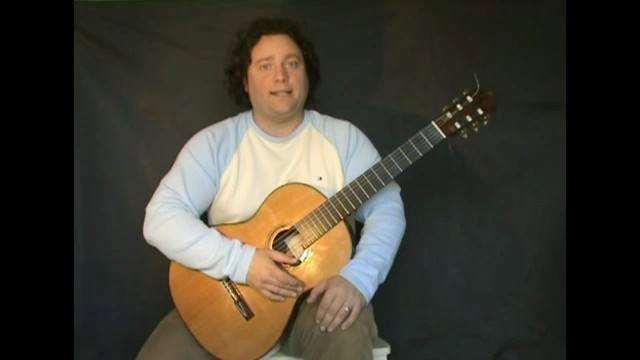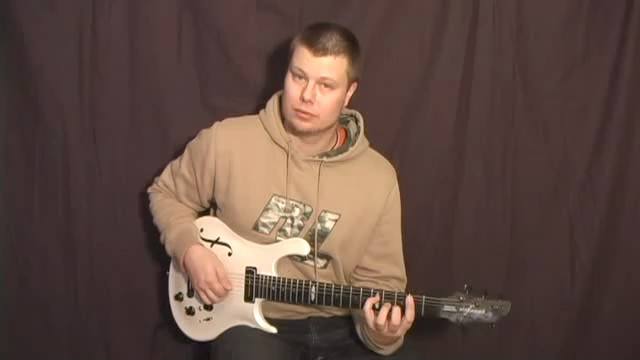Welcome!
For this lesson I just wanted to introduce some new voicings to your vocabulary. All the chords listed here are G Major chords. Most are either basic triads or Maj7th chords. There are a few inversions and one extended chord with a non-diatonic interval.
In case you don't know what all that means I will briefly describe each chord below. If you want more detailed info check out our theory lessons on chords and chord construction.
1: G Major triad, in open voice. You will recognize this shape as your 'G form'
2: G Major triad again, this time in the E form.
3: G Major7/B. This is the first inversion of a G Major 7th chord. The notes in this chord are the same as a normal GMaj7 only we have changed the root note to the 3rd.
4: G Major 7th. A common accompaniment voicing.
5: G Major 7th. A common accompaniment voicing.
6: G Major triad. Played in the D form.
7: G Major 7th. This is the second inversion. The 5th degree is now the root note.
8: G Major triad. Played in the C form.
9: G Major triad with an added 9th.
10: G Major triad with added 6th and 9th.
11: G Major7/F#. The 3rd inversion of G Major7. The 7th is now the Root. (This chord can also be considered a rootless voicing of B minor)
12: G Major9. Here we have a G Major7 with a 9th, the 5th of the chord is not voiced.
13: G Major7. A common accompaniment voicing. Based on the A form.
14: G Major9. Similar to chord 12 however we have the 5th on top this time.
15: G Major7#11/D. This is a rather complicated name, an easier one would just be Dmajor7, considering that's what it is. But I wanted to throw it in as another example of how chords can be perceived in more than one way.

